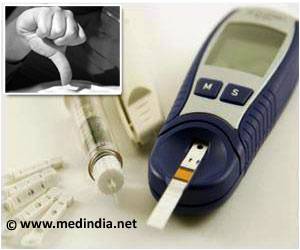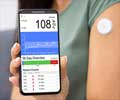The bionic pancreas, an automated insulin administration system, helps people maintain healthier blood glucose levels in type 1 diabetes.
- Automated insulin delivery systems that administers the hormone insulin as necessary, and monitor a person’s blood sugar levels using a continuous glucose monitor
- Newly developed bionic pancreas requires less user input and offers greater automation than other artificial pancreatic technologies currently in the market
Read More..
What are Automated Insulin Delivery Systems
Automated insulin delivery systems, also known as artificial pancreas or closed-loop controls, monitor a person’s blood sugar levels using a continuous glucose monitor. It uses an insulin pump to automatically administer insulin whenever necessary. These systems take the place of relying on a fingerstick test, a pump without automation, or a continuous glucose monitor with an independent insulin supply through several daily injections.The device’s algorithms continuously modify insulin doses automatically based on users’ needs. The bionic pancreas requires less user input and offers greater automation than other artificial pancreas technologies now on the market. When using the bionic pancreas for the first time, users initialize it by entering their body weight into the device’s dosing software.
Additionally, users of the bionic pancreas do not need to start insulin injections to lower blood sugar levels or count carbohydrates. Additionally, medical professionals are not required to modify the device’s settings regularly.
Importance of Blood Sugar Level Control in Diabetes
“Keeping tight control over blood glucose is important in managing diabetes and is the best way to prevent complications like eye, nerve, kidney, and cardiovascular disease down the road," said Dr Guillermo Arreaza-Rubín, director of NIDDK’s diabetes technology program. “The bionic pancreas technology introduces a new level of ease to the day-to-day management of type 1 diabetes, which may contribute to improved quality of life.”Health Benefits of Bionic Pancreas
326 people with type 1 diabetes who had been receiving insulin for at least a year participated in the 13-week experiment, which was carried out at 16 clinical sites across the United States. Participants ranged in age from 6 to 79. The bionic pancreas device treatment group and the standard-of-care control group, each using their pre-study insulin delivery method, were randomly allocated to the participants. Nearly a third of the control group used commercially available artificial pancreas equipment throughout the research, and every participant in the control group received a continuous glucose monitor.Glycated hemoglobin, a marker of long-term blood glucose control, decreased from 7.9% to 7.3% in patients utilizing the bionic pancreas but did not alter in the standard-of-care control group. Participants in the prosthetic pancreas group stayed within the desired blood glucose range for 11% longer than those in the control group, or almost 2.5 hours each day. Both child and adult participant experienced similar outcomes, and those who had higher baseline blood glucose levels experienced the largest gains in blood glucose control.
Participants in the prosthetic pancreas group stayed within the desired blood glucose range for 11% longer than those in the control group, or almost 2.5 hours each day. Both child and adult participants experienced similar outcomes, and those who had higher baseline blood glucose levels experienced the largest gains in blood glucose control.
“Our observation that this system can safely improve glucose control to the degree we found and do so despite requiring much less input from users and their health care providers, has important implications for children and adults living with diabetes,” said Dr. Steven Russell, study chair, associate professor of medicine at Harvard Medical School, and staff physician at the Massachusetts General Hospital in Boston.
In the bionic pancreas group, hyperglycemia, or elevated blood sugar, brought on by issues with insulin pump machinery, was the most often reported adverse event. Low blood sugar occurrences, often known as mild hypoglycemia, were few and did not differ between the groups. Between the standard of care and artificial pancreas groups, there were no statistically significant differences in the incidence of severe hypoglycemia.
Diabetes Technology and Therapeutics additionally published four companion articles, of which two gave more thorough results for the individuals who were adults and children. In a follow-up study, participants from the standard-of-care control group converted to using the bionic pancreas for 13 weeks and showed improvements in glucose control comparable to those shown in the bionic pancreas group in the randomized trial, according to the third paper’s findings. Results from the fourth publication demonstrated that utilizing the bionic pancreas with faster-acting insulin improved glucose control in 114 adult participants just as well as using the device with regular insulin (1✔ ✔Trusted Source
Multicenter, Randomized Trial of a Bionic Pancreas in Type 1 Diabetes
Go to source).
“NIDDK’s decades-long investment in developing advanced technologies for diabetes management has reached another promising milestone and continues to provide significant return,” said NIDDK Director Dr Griffin P. Rodgers. “While we continue to search for a cure for type 1 diabetes, devices like the bionic pancreas can allow people to worry less about their blood-glucose levels and focus more on living their fullest, healthiest lives.”
Dr. Edward Damiano, project principal investigator, professor of biomedical engineering at Boston University, and founder and executive chair of Beta Bionics, Inc., concurs. “The completion of this study represents a major milestone for the bionic pancreas initiative, which simply would not have been possible had it not been for the support provided by the NIDDK over the years.”
Reference:
- Multicenter, Randomized Trial of a Bionic Pancreas in Type 1 Diabetes - (https://www.nejm.org/doi/full/10.1056/NEJMoa2205225)
Source-Medindia
















